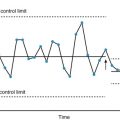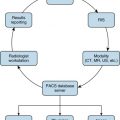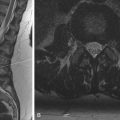Abstract
Medical professionalism encompasses issues of professional competence, medical ethics, respect, transparency, patient welfare, and social equality. Professionalism has assumed a position of great visibility in the medical community in the past decade, as a response to evolving healthcare methodology and the concept of primacy of the patient. This chapter focuses on the physician-patient relationship, disruptive behavior, conflict of interest, transparency, and medical ethics. Physicians who demonstrate unprofessional or unethical behavior must be identified to mitigate the potential impact on the quality and safety of care as well as resultant patient and employee dissatisfaction. Identification allows intervention and provides support and potential professional assistance if needed to the physician. Reporting requirements to external agencies and strategies to proactively minimize negative behavior and effectively deal with such behavior when it occurs are presented as a guide for the reader.
Keywords
Conflict of interest, medical ethics, medical errors, medical professionalism, physician behavior, patient rights, research misconduct
Principles of Medical Professionalism and the Physician Charter
As societal norms have transformed and continued to evolve, physicians and other clinicians have faced significant legal, moral, and ethical quandaries that have influenced the practice of medicine. Although the development of professionalism stems from the core tenets of ethics and medicine, coined by Aristotle and Hippocrates respectively, it has been codified most famously by the Institute of Medicine in its white papers, To Err Is Human: Building a Better Healthcare System, and Crossing the Quality Chasm: A New Healthcare System for the 21st Century.
With the increasing emphasis of professionalism in radiology during the past decade, associated with shifting patient expectations, there has been a joint effort by the American Board of Radiology (ABR), the American College of Radiology (ACR), and the Radiological Society of North America (RSNA) to train and educate radiologists on professionalism and ethics. To support this endeavor, the RSNA Professionalism Committee adopted the Physician Charter and presented it at the opening session of their annual meeting in 2006. As adopted by the RSNA, professionalism is the basis of medicine’s contract with society. It places the welfare of the patient above that of the physician, sets and maintains standards of competency and integrity, and provides expert advice to society on matters of health. The Physician Charter ( Box 12.1 ) outlines three principles of medical professionalism and denotes 10 professional responsibilities.
Principle of Primacy of Patient Welfare
This principle is based on a dedication to serving the interests of the patient. Altruism contributes to the trust that is central to the physician-patient relationship. Market forces, societal pressures, and administrative exigencies must not compromise this principle.
Principle of Patient Autonomy
Physicians must have respect for patient autonomy. Physicians must be honest with their patients and empower them to make informed decisions about their treatment. Patients’ decisions about their care must be paramount, as long as those decisions are in keeping with ethical practice and do not lead to demands for inappropriate care.
Principle of Social Justice
The medical profession must promote justice in the healthcare system, including the fair distribution of healthcare resources. Physicians should work actively to eliminate discrimination in healthcare, whether based on race, gender, socioeconomic status, ethnicity, religion, or any other social category.
Physician-Physician and Physician-Patient Interactions
As members of a profession, physicians must work collectively to enhance patient care, maintain a level of mutual respect, and participate in the processes of self-regulation. This involves remediation and discipline of members who do not adhere to strict predefined educational and professional standards. Physicians have both individual and collective duties to partake in these processes, including internal assessment and accepting third-party scrutiny of performance. Both the referring physician and the radiologist must demonstrate mutual respect for one another as well as take shared responsibility for the patient’s welfare. Furthermore, it is the radiologist’s obligation to review and interpret imaging studies in a timely manner and recommend additional studies when appropriate, while taking the patient’s history and clinical symptoms into account.
In terms of the physician-patient relationship, physicians incur the responsibility of caring for patients when they are most vulnerable. Consequently, certain physician-patient interactions should be avoided because they promote impropriety within the profession. Physicians should never exploit patients’ trust for personal financial gain, sexual advantage, or other private gain. Additionally, physicians must maintain a high level of discretion by maintaining patient confidentiality when interpreting and reporting studies. Treating the patient as a healthcare partner includes detailed but clear informed consent, patient-centered decision making, and disclosure of medical errors and diagnoses should they arise ( Box 12.2 ).
- 1.
Professional competence
- 2.
Honesty with patients
- 3.
Patient confidentiality
- 4.
Maintenance of appropriate relations with patients
- 5.
Improvement of quality of care
- 6.
Improvement of access to care
- 7.
Just distribution of finite resources
- 8.
Scientific knowledge
- 9.
Maintenance of trust by managing conflicts of interest
- 10.
Maintenance of appropriate relations with other physicians and healthcare professionals
- 11.
Sensitivity to patients of diverse backgrounds ∗
∗ Additional tenet added by the RSNA.
RSNA, Radiological Society of North America.
Dealing with Unprofessional Behavior
Disruptive behavior leads to medical errors, increased cost of care, patient dissatisfaction, attrition of personnel, and is common in high-pressure, high-stakes environments. Abusive, unethical, or intolerant behavior must be dealt with quickly and decisively, without consequence to the complainant. However, because disruptive behavior varies in its manifestations, intensity, and frequency, a variety of resources are required to approach potential solutions. Oversight can range from informal discussion between peers to legal action in the courts. Many institutions have developed formal, structured pathways to deal with troublesome behavior, as defined in the medical staff bylaws, with committees focusing on the disruptive physician and the impaired physician. There is training available for those dealing with unprofessional behavior as an avocation, as well as others who may be involved in the remediation process. Examples of professionalism programs include Brigham and Women’s Hospital, the University of Pennsylvania Health System, and Vanderbilt University School of Medicine.
It is often useful to emphasize episodic behavior rather than values when working with disruptive physicians, because it is less threatening, focuses on the what rather than the why , and therefore may prove easier to accept and improve. An initial episode of disruptive behavior can often be handled by peer-to-peer mentoring, or the cup of coffee approach, focusing on the incident, listening to potential causative issues, and providing advice. This does require follow-up to verify that the behavior has ceased and that the physician has gained capability in dealing with precipitating issues. Typical concerns that increase the likelihood of unacceptable behavior include life stressors such as a demanding workload, job insecurity, financial difficulty, and marital discord. Discrimination against others based upon gender, ethnicity, or religion as a basis for the behavior necessitates adherence to workplace requirements based on a no tolerance policy. Many institutions now have a Committee on Professionalism to assist in the process of dealing with unprofessional behavior, including trained professionals to assist with assessment and recommendations. It is incumbent on physicians to report impaired or incompetent peers, to assure safety of patients, protect other staff, and provide assistance for the professional in question.
Unfortunately, the disruptive physician may display repetitive, deep-seated behavior that requires alternate approaches for remediation. For personality disorders, compulsory counseling may be required. This situation is best handled by a specialized committee that can recommend resources and receive general professional feedback on success. The Committee on Professionalism or a sister committee may be charged with overseeing the evaluation and recommendation processes as well as gauging success of therapy. For some physicians, underlying psychiatric issues or substance abuse may lead to aberrant behavior, and evaluation and therapy should be handled by trained professionals. There is typically a mandatory requirement for counseling and/or addiction therapy coupled with a medical leave of absence. There is no return to work until professional therapists involved in care provide a professional opinion that this is an appropriate course of action. In these instances, long-term follow-up is required, even with an apparent successful outcome, because the relapse rate remains high. External, professional academic programs allow the distressed physician to receive evaluation and treatment in a supportive and tailored environment with full confidentiality.
The issue of how to handle physicians who display continuing disruptive behavior despite intervention is complex, with ramifications that may involve suspension or loss of medical staff privileges, mandatory reporting to the state licensing bureau, involvement of the Equal Opportunities Commission, or legal action. The Joint Commission requires hospitals to provide procedures for identifying and referring impaired physicians for evaluation and treatment, in addition to educating physicians and staff about physician health and impairment. The bylaws of the medical staff typically specify the processes for evaluation, potential remediation, suspension or revocation of privileges, and reporting to the state licensing bureau or law enforcement. In addition, the bylaws also detail the rights of the accused caregiver and due process procedures. Reporting requirements to state licensing bodies vary from state to state but in general include ethical or competence breaches that put patients or others at risk. Unfortunately, many state licensing boards provide little guidance on the subject, with requirements for individual reported physicians at times shrouded in mystery. However, as the topic of physician behavior continues to expand in the public and professional domains, there is an increasing trend to recommend avenues for evaluation and treatment, in addition to punitive action.
Stay updated, free articles. Join our Telegram channel

Full access? Get Clinical Tree








